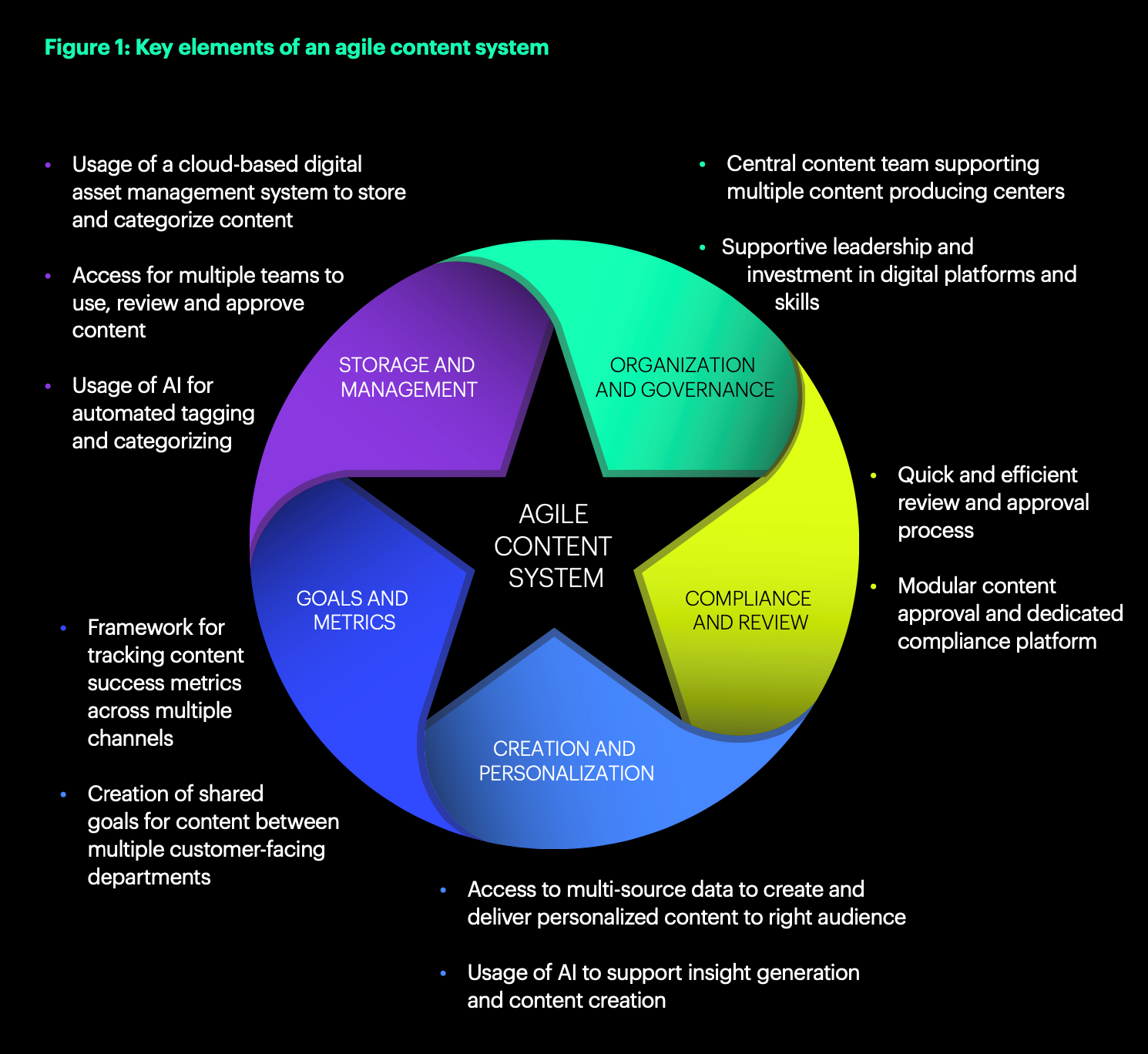BLOG
Is Your Healthcare Organization’s Content Strategy in Need of a Rapid Response Team?
Our research shows modular, agile content systems can increase engagement and build relevance.
In The 2021 State of Digital Content Report, Altimeter surveyed 375 top content executives at businesses around the world to understand the content challenges their organizations face. What did the research indicate? Companies are feeling the pressure to churn out high-quality, relevant digital content like never before.
While not all companies can keep up with the accelerated pace of content creation, Altimeter found that those that are successful in meeting this demand have implemented an “Agile Content System.”
What is an Agile Content System?

Though all industries failed to hit the mark perfectly on every capability of an Agile Content System, healthcare, specifically life sciences and pharmaceuticals that were surveyed, was found to be the biggest laggard. Due to legal limitations for data use and messaging, healthcare organizations need to manage strict oversight and time-consuming content reviews – making it increasingly difficult to personalize and approve content, decentralize content creation and measure the ROI of marketing investments.
“Real-time publishing is key to producing high-quality, digital content at scale.”
To put it into perspective, one pharmaceutical client told us that it would take their company over 80 days, with 40 handoffs and 12 people involved to get a single email approved. By contrast, a vacuum manufacturer switched from producing vacuum cleaners to ventilators in under a month as soon as COVID-19 hit!
But there is a prescription for improvement. Healthcare organizations can optimize their digital content strategy by leaning into three imperatives.
Imperative 1: Ensure Technology and Workflows Streamline Approval Processes
In an Agile Content Strategy, real-time publishing is key to producing high-quality, digital content at scale. However, this requires that the approval and compliance processes are structured in a way that optimizes fast, efficient publishing – as opposed to slowing it down.
With multiple reviews by multiple stakeholder groups – ethics boards, legal teams and subject matter experts – the entire end-to-end approval process can hold publishing timelines back. While healthcare companies cannot completely do away with these regulatory checks, they can:
- Invest in better content approval software: Companies are increasingly investing in technology to improve the approval process, with 16% having reported using a dedicated compliance platform (Altimeter, 2021). Software, like Veeva Systems, that streamline the approval process and allow for quicker review, can help standardize and drive efficiency in the overall workflow.
- Leverage a modular content creation approach: Creating smaller pieces of digital content (e.g., a paragraph of text) that can be sent for faster approval can help content teams accelerate their publishing speed. In addition, it allows bite-sized chunks of content to be combined in different ways based on consumer demographics, which improves audience targeting and personalization.
- Clearly define content roles: With various content being created across the entire organization, it is important that roles are crystal clear in terms of who is owning what. For example, corporate marketing could own industry-wide content whereas business units could own their sector and/or regional themes, etc. When teams are aligned to their content roles and responsibilities, it makes it easier to create and approve content at a faster pace.
However, healthcare organizations cannot rely on improved technology or modular content alone. To address and improve the root cause of a slow approval process, the industry must move away from an archaic content team structure and toward a more autonomous, decentralized model.
Imperative 2: Restructure Content Teams for Greater Agility
Compared to other industries, healthcare organizations tend to centralize how to create and approve content. This process preserves the brand, ensures compliance and creates consistency across all touchpoints. But it also slows down content development and limits the potential impact content can have on strategic business objectives.
To move forward, healthcare organizations should consider restructuring their content teams to allow for greater agility while still meeting consistency needs. Here are two different strategies to consider based on where decentralization makes the most sense for the business:
- For organizations that need to focus brand awareness (e.g., showcasing a new brand, launching a product), centralize the content strategy, but decentralize creation: Have a centralized entity develop a unified content strategy, and then allow for brand owners within the organization to execute it. This approach not only creates consistency but also allows for brand owners to create content at a speed that meets their business units’ needs.
- For organizations that need to generate leads or revenue (e.g., moving into a new market), centralize the content creation, but decentralize strategy: Have a centralized entity continue to create content, but allow for leaders of various departments across the organization to drive the content strategy. This approach ensures that all content meets brand, legal and consistency requirements while empowering individual teams to own the strategy and ensure it ladders up to their established KPIs.
Imperative 3: Set Bolder, Clearer Goals That Go Beyond Brand
While other industries are finding ways to track how their content delivers on clear objectives (e.g., e-commerce conversion or account sales), the majority of healthcare companies (40%) chose brand awareness as their top content strategy goal (Altimeter, 2021).
Although some healthcare organizations have goals that are inherently difficult to track against content initiatives, like patient leads and health outcomes (looking at you, health systems), there are strategies your team can implement to make the most of your content:
- Invest in more holistic measurement systems: Which overall business objectives could your content goals help advance? Having a clear answer to this question will help facilitate buy-in and investment, even if it’s simply what the content can achieve on its own. Remember that building a holistic measurement system won’t occur in a day. You’ll need to collect data and map out how metrics interact with one another. Then, you’ll be able to attribute the effects of content strategy actions to the business outcomes and outputs. As your organization develops the ability to track and measure more inputs, your measurement system will become more robust, and more useful to guide future content strategy decisions.
- Create more intentional, measurable goals: If a holistic measurement system is out of reach, set clear, specific goals for content strategy. What does the organization want content to achieve at a strategic, not tactical, level? From a clear content strategy, teams are better prepared to create and measure KPIs that specifically deliver on the strategy. For example, if an organization decides that content should be used as a window into the organization and shows how the organization treats its employees and its policies toward suppliers/vendors, it’s the organization’s team can better measure how content is impacting perceptions of transparency and trust (via internal/external surveys, social listings, etc.).
FINAL THOUGHTS
Content isn’t easy, but with faster content creation systems, decentralized approval and broader content objectives, healthcare can take a leap towards greater agility and relevance. Today’s diagnosis isn’t good — but with the steps above, the prognosis is optimistic.
Ready to revamp your organization’s digital content strategy? Reach out to Prophet today.

